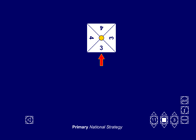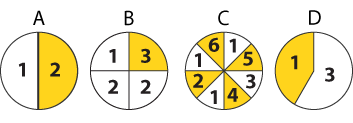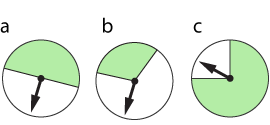Consolidation and practice
These resources are to support children in guided or independent work. Roll over the highlighted resource for a description.
Number spinners

This interactive teaching program (ITP) is an ICT-based tool to support the exploration of number, reasoning and problem solving. Number spinners ITP allows the child or teacher to generate 3, 4, 5 or 6 random numbers on up to 3 spinners. Numbers from 0 to 99 can be displayed.
Opportunities to use and apply
Possible contexts include:
- Games, e.g. Probability based game shows such as 'Play your cards right'; card and dice games, for example: Use two 1–6 dice. Player A wins a point if the numbers on the two dice total 2, 3, 4, 5, 10 or 12. Player B wins a point if the numbers total 6, 7, 8 or 9. Is this fair? Explain your answer. If the game is not fair, devise new fair rules.
- 3-D shape, e.g. Use nets of regular polyhedra, to make dice. Ask the children to compare the likelihood of getting a particular number with different shapes and explain their conclusions.
- Problems, e.g. Colour a spinner so that it is twice as likely to land on green as it is to land on blue. Justify why you think your shading represents the given probability. Use the language of probability and the probability scale to justify your answer.
Confirming learning
Ask probing questions such as:
-
Decide whether each statement is true or false. Explain how you know. Use the probability scale to illustrate your explanation.


- Spinners A, B & C are equally likely to spin a 2.
- The chance of spinning a 3 on spinner B and on spinner C is equal.
- You would be more likely to spin a 1 on spinner D than on any other.
- There is a 25% chance of getting a 3 on spinner C.
- You are more likely to spin an odd number on spinner C than any other.
- The chance of spinning a number greater than 4 on spinner C is 2/6.
- A fair dice has the numbers 1, 3, 3, 3, 4 and 4 on it. Draw your own probability scale and mark the probability of rolling: 2; 3; 4; a number smaller than 10.



 Handling data
Handling data


